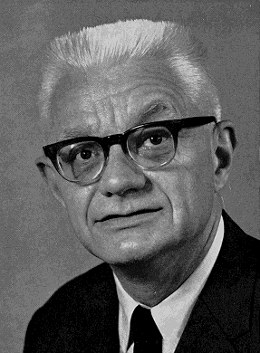Carl Gustav Hempel facts for kids
Quick facts for kids
Carl Gustav Hempel
|
|
|---|---|
 |
|
| Born | January 8, 1905 |
| Died | November 9, 1997 (aged 92) Princeton, New Jersey, U.S.
|
| Education | University of Göttingen University of Berlin (PhD, 1934) Heidelberg University |
| Era | 20th-century philosophy |
| Region | Western philosophy |
| School | Analytic philosophy< Berlin Circle Logical behaviorism |
| Institutions | University of Chicago City College of New York Yale University Princeton University Hebrew University University of Pittsburgh |
| Thesis | Beiträge zur logischen Analyse des Wahrscheinlichkeitsbegriffs (Contributions to the Logical Analysis of the Concept of Probability) (1934) |
| Doctoral advisors | Hans Reichenbach, Wolfgang Köhler, Nicolai Hartmann |
| Other academic advisors | Rudolf Carnap |
| Doctoral students |
|
| Other notable students | Robert Stalnaker |
|
Main interests
|
|
|
Notable ideas
|
|
|
Influences
|
|
|
Influenced
|
|
Carl Gustav "Peter" Hempel (born January 8, 1905 – died November 9, 1997) was a German philosopher and logician. He was a very important thinker in a movement called logical empiricism. This was a big part of the philosophy of science in the 20th century.
Hempel is famous for explaining the deductive-nomological model of scientific explanation. This model was seen as the main way to explain things in science during the 1950s and 1960s. He is also known for a puzzle called the raven paradox, sometimes called "Hempel's paradox."
Contents
Carl Hempel's Early Life and Studies
Carl Hempel studied mathematics, physics, and philosophy. He went to the University of Göttingen and later to the Humboldt-University of Berlin and Heidelberg University.
In Göttingen, he met a famous mathematician named David Hilbert. Hempel was very impressed by Hilbert's plan to build all of mathematics on strong logical rules.
After moving to Berlin, Hempel joined a meeting about scientific philosophy in 1929. There, he met Rudolf Carnap and became part of the Berlin Circle. This was a group of philosophers connected to the Vienna Circle.
In 1934, Hempel earned his PhD from the Humboldt-University of Berlin. His main supervisor was Hans Reichenbach. His paper was about probability theory. It was titled Contributions to the Logical Analysis of the Concept of Probability.
Carl Hempel's Career Journey
After finishing his PhD, Hempel had to leave Germany. The Nazi government was becoming very strict and unfair, especially towards Jewish people. Hempel's wife had Jewish family, so they moved to Belgium. A scientist named Paul Oppenheim helped him.
In 1937, Hempel moved to the United States. He started working at the University of Chicago as an assistant to Rudolf Carnap. He then taught at several other universities.
- City College of New York (1939–1948)
- Yale University (1948–1955)
- Princeton University (until 1973, when he retired)
After retiring from Princeton, he taught at the Hebrew University of Jerusalem for a few years. Later, he became a professor at the University of Pittsburgh and taught there until 1985.
In 1989, the Philosophy Department at Princeton University honored him. They renamed their lecture series the 'Carl G. Hempel Lectures'. He was also a member of important groups like the American Academy of Arts and Sciences.
Carl Hempel's Ideas on Philosophy
Hempel preferred to call himself and other philosophers "logical empiricists." He didn't like the term "logical positivism." He felt that "positivism" suggested ideas about materialism that he didn't agree with.
He believed that some ideas, called metaphysics, were about things that couldn't be known. Hempel thought that these ideas couldn't be proven right or wrong by evidence.
Hempel also helped bring back the Deductive-nomological model of explanation in the 1940s. He wrote an important paper called "The function of general laws in history."
Carl Hempel's Legacy
In 2005, the City of Oranienburg, where Hempel was born, honored him. They named one of their streets "Carl-Gustav-Hempel-Straße" in his memory.
See also
 In Spanish: Carl Hempel para niños
In Spanish: Carl Hempel para niños

